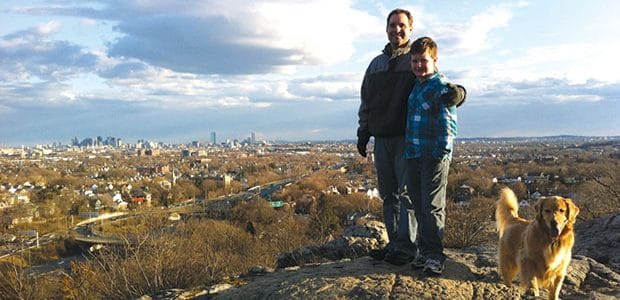For students, summer may seem like simply the time between semesters when productivity takes a backseat to leisure. But this summer busloads of Texas teenagers “redeemed the time.”
During the Southern Baptists of Texas Convention’s three student camps, 152 teenagers registered professions of faith, 81 accepted calls to the ministry and 67 made other life-defining decisions. Nearly 1,500 students attended one of the three weeks offered during two weeks of M3 Camp and one week at Palacios.
M3 Camps—the three M’s represent moment, mission and ministry—are organized by the SBTC’s student evangelism area, with one week at Highland Lakes Camp in Spicewood and one week at Camp Zephyr in Sandia. Youth Week at Palacios, a camp organized by the language ministries department, aims to provide a quality camp experience to Hispanic churches, though it draws a few non-Hispanic church groups as well.
M3 Camps
The larger of the two camps, M3 saw 127 salvation decisions. Garrett Wagoner, student collegiate associate with the SBTC, said M3 intentionally and clearly presents the gospel to unconverted students and challenges those who have already trusted Christ to live lives of gospel mission and ministry.
Some credited an ongoing prayer effort during both weeks of M3 with the results that followed.
Students and adults took turns offering continuous prayer for all those at the camp, including the camp staff, by name. Wagoner said students who struggled with issues such as suicidal thoughts and depression sought intercessory prayer in the tent as well. During week one and week two, students also read the entire New Testament aloud, ending in what Wagoner described as a moving moment as students read the final verses in Revelation.
Jeremy McNair, youth pastor of Cornerstone Baptist Church in Fort Worth, agreed that the prayer room played an important role for the 30 students from Cornerstone. He said through the week, his students had been praying for one student in their group who had been raised in Africa as a Muslim. He had recently come to the United States to live with family but had not shown interest in knowing or following Christ.
“When he came to our church, he was very respectful of our beliefs but firm in the fact that he wasn’t necessarily interested in receiving Christ,” McNair said.
But during one of the camp worship services, the young man got up and ran out from the gathering. McNair quickly caught up with him and listened to what he had to say.
“He said, ‘I know that Jesus is real.’ I said, ‘He is real.’ He said, ‘I know that Jesus is here.’ I said, ‘Absolutely,’” McNair recounted.
When the student still had reservations about abandoning his Muslim beliefs, McNair explained that Jesus said he is the “only way” to salvation and told him that one cannot serve both Christ and Allah.
“He renounced Allah and gave up his Muslim background in favor of serving Christ,” McNair said. “It was amazing to see the youth group who had been praying for him and modeling the Christian lifestyle rally around him. It was a fantastic end to the camp.”
Wagoner said on the last night of the second week of camp, camp pastor Ryan Fontenot challenged the students to go share the gospel with students who had not yet come to faith.
“I saw 13-year-olds who were broken over their friends who did not know Jesus, which is only something the Spirit of God can do,” Wagoner said. “Seventeen students gave their lives to Christ [that night].”
“What makes these camps different is it’s not just fun and games where we stick a message in there,” Wagoner added, explaining that the focus of the camp is challenging students in their walk with Christ.
M3, which drew groups from 25 churches this year, has grown in popularity among Texas student ministries, and organizers already plan to add a third camp week for next summer.
Youth Week at Palacios
More than 300 students attended Youth Week, held at the Palacios by the Sea Baptist Encampment in Palacios. The new location—a change from the camp’s home of six years at Alto Frio Baptist Encampment in Leakey—allowed for many Houston-area churches to attend and helped double the camp’s attendance from last year. During Youth Week, students heard a clear gospel message and the call to live a life that honors the Lord, said Jesse Contreras, SBTC language ministries associate.
Contreras said many of the students who came to this year’s camp struggled with weighty burdens and strongholds and found a respite in being at the camp, away from their everyday environments.
“Some of the students came to our camp struggling with suicidal tendencies, broken homes, violence, divorce, pornography, peer pressure and lack of purpose,” Contreras said. “Some of these students were able to receive prayer, encouragement and face-to-face time, but, overall, instruction from God’s Word concerning the issues they were struggling with.”
This year 25 students accepted Christ as savior, 15 rededicated their lives to Christ, one accepted a call to ministry, seven spoke with counselors about assurance of salvation and five made other decisions.
Contreras said Youth Week plays a vital role in the spiritual lives of the teenagers who attend, providing them a distraction-free environment in which they can seriously contemplate what it looks like to follow Christ wholly.
“I think that camps are a milestone to many of our students’ lives,” Contreras said. “Decisions to follow Christ for the rest of their lives are made at these camps, and many have sensed a calling of God on their lives to serve him in various ministries. We hope that the students will realize that they are not invincible but that they are fearfully and wonderfully made by our Creator.”
To find more information about attending an M3 camp or Youth Week camp in 2014, contact Wagoner or Contreras at the SBTC office, 817-552-2500, or watch for camp registration announcements at sbtexas.com later this year.











